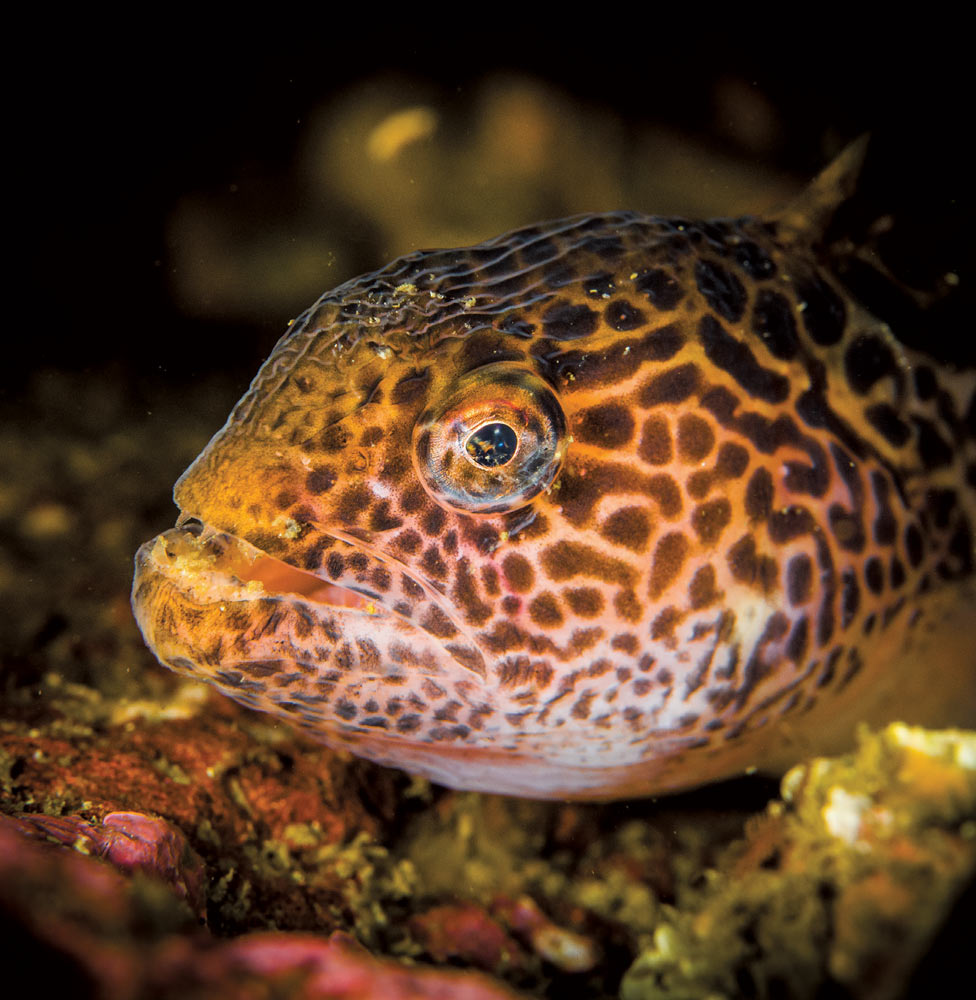If the Beatles discovered this month’s dive spotlight site it would have been named “Strawberry Fields Forever.” However, the local name for the site is Carmel Bay Outer Pinnacles. Carmel Bay has an area called The Pinnacles which is about 1 mile south of Sunset Point, near the Lone Cypress tree along the 17-mile drive in Carmel. The underwater structure is composed of large granite boulders covered in strawberry anemones (Corynactis californica). In some cases, the boulders form pinnacles; hence the dive site’s moniker. If you are doing underwater photography, it will be hard to take an image without strawberry anemones in the background. The common name of strawberry anemone is a bit misleading because they are not a true sea anemone and their color can vary dramatically and include red, pink, brown, purple, yellow, and white. And just to make things a bit more difficult they have a second common name; club-tipped anemone. Strawberry anemones tend to live in colonies but are not very sociable to other species of anemones and coral and will attack rival species with toxins. A study done in 2008 showed evidence that strawberry anemones thrived under kelp canopies. The Outer Pinnacles dive site certainly corroborates the finding of the study. The kelp and the strawberry anemones are doing well together at this site. Many other dive sites in Monterey Bay and Carmel Bay have been devastated by the purple urchin invasion but the giant kelp in this location is doing fairly well.
The dive site is located within the Carmel Pinnacles State Marine Reserve. Fishing is not allowed in the reserve. Basically, this is a complete no-take area. Access to the dive site is via boat. The location of this site is between the Inner Pinnacles dive site and the Horseshoe dive site. The area is a popular destination for day dive charters from Monterey harbor. The underwater structure of this site and its proximity to the Carmel trench provides a nutrient-rich environment for many species to thrive. Rockfish, lingcod, kelp greenling, painted greenling, sculpin, and cabezon can be spotted in the area. And it is evident the protection provided by the marine reserve status helps boost the wildlife density in the area. The longfin sculpin (Jordania zonope) is an uncommon, but welcome find for the area. I would consider the longfin sculpin a signature species for the area. Watch for wolf eels (Anarrhichthys ocellatus) hiding in the granite crevices. Juvenile wolf eels have an orange/brown/cream coloring with a leopard spot pattern and adults are extremely wrinkled and grey.

A close-up of the ubiquitous strawberry anemone. Photo by Bruce Sudweeks.
As the song says: “Let me take you down, ‘cause I’m going to strawberry fields.” On your way down you will encounter the top of the outer pinnacle at a depth of about 45 feet and the base of the pinnacle will be at a depth of about 100 feet. There are majestic granite channels on and around the pinnacle that are deep enough to swim through. The invertebrate life on the pinnacle and in the channels is very diverse and includes many species of large sea anemones and a healthy colony of California hydrocoral (Stylaster californicus) in pink, orange, and purple colors. Depending on the season, you’ll find a variety of nudibranchs. Watch for white Dendronotus (Dendronotus albus) and the three-lined aeolid (Flabellina trilineata) nudibranchs. From a cursory glance these two nudibranchs are hard to tell apart. Hilton’s nudibranch (Phidiana hiltoni) can be found here as well and can be considered a signature species for the area. The yellowedged Cadlina (Cadlina luteomarginata) and sea lemon (Peltodoris nobilis) nudibranchs are quite plentiful in the area. And of course, there are three species of nudibranchs that look similar to the sea lemon so you will likely have to consult an ID book when you get back to shore to make a positive identification. Chestnut cowries are a welcome find in and around Carmel Bay.

Juvenile wolf eel safe in a cave. Photo by Bruce Sudweeks.
On your trip back to the surface be sure to spend some time exploring the kelp. During my most recent trip to this site my safety stop consisted of 20 minutes of kelp forest bathing; just me and a few dozen moon sea jellies (Aurelia aurita) floating among the kelp fronds with the sun rays streaming through the canopy. In many parts of the world forest bathing is the rage. At this dive site you can take forest bathing to the next level with the sense of weightlessness if you have your buoyancy dialed in just right in the shallows. I fondly refer to this as my “full moon (sea jelly) kelp forest bathing dive.” The experience was truly magical.






